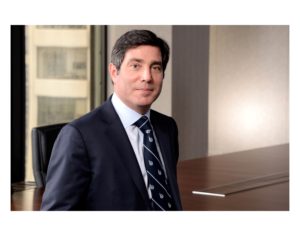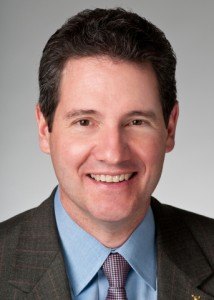

Arguing that the media has been fed misinformation by the plaintiffs bar, the chief executive officer of a property/casualty insurer said facts will win out on debates over business interruption coverage disputes related to COVID-19 shutdowns.
“One of the challenges is society has been informed by the media and has not always been based in fact, and people need to focus more on the facts,” said W. Robert Berkley, Jr., president and CEO of WR Berkley, speaking during the Standard & Poor’s Annual Insurance conference last Thursday. Berkley was responding to the moderator of a virtual session, Kevin Ahern, managing director and analytical manager of S&P Global Ratings, who asked the CEO to talk through some of the complicated issues related to business interruption claims being filed by businesses impacted by the pandemic.
“You need to start from a place, which I think we all have an appreciation for, that the circumstance that society has faced both in the United States as well as around the world is unprecedented, unconscionable and heart wrenching,” Berkley said. “Those circumstances, those realities have led to people searching for answers, searching for solutions, searching for comfort. And as it has been from time to time in this case, that has been a path that for some has led mistakenly to the insurance industry,” he said, going on to express the view that much of the public has been informed a great deal by the media, and “the media has been, to a certain extent in many situations, disproportionately influenced or misinformed by the plaintiff bar.”

“Those realities have led to people searching for answers, searching for solutions, searching for comfort. And as it has been from time to time in this case, that has been a path that for some has led mistakenly to the insurance industry.”
Robert Berkley, Jr., WR Berkley
The plaintiffs bar “is choosing to use a broad brush” instead of paying attention to the factual coverage distinctions between policies, he said, also suggesting that these lawyers are venue shopping “to try and find the soft spot” to prevail with their cases.
Still, Berkley believes policy wordings will ultimately hold. “I think interested observers should be spending less time worrying about what the media is commentating on and more time looking at historical case law as well as recent rulings that are coming out of courts,” he said.
Responsible Risk-Taking
Berkley was joined on the virtual CEO by Christopher Swift, chair and CEO of The Hartford, who expressed similar views in a commentary he wrote that was published on CNN.com early last week (“The Hartford CEO: Insurance companies can’t be expected to cover a business’ pandemic losses,” CNN.com, June 1, 2020)
“Along with our agent and broker partners, we strive to be clear and transparent with our customers about events that are covered—or not covered—by our policies so people know what to expect. Divisive rhetoric, half-truths and sound bites can’t rewrite contractual terms,” he wrote.
At the S&P session, both executives spoke about private-public partnerships with the federal government being discussed on Capitol Hill for future solutions to pandemic-related business interruptions.

“Maybe with time and energy, there could be a private market that develops over time. But to try to force a private market solution right now doesn’t make any sense because we’re still battling a COVID today.”
Christopher Swift, The Hartford
“I don’t think…fundamentally that you could charge adequate prices or that the take-up rate would be sufficient to have any type of spread of risk in a classic sense. And the spread of risk, we know, is just fundamentally flawed: It’s happening all across the country, all across the world….There is no safe harbor,” Swift continued, .
Berkley’s remarks were similar. “Ultimately, we would be operating in an irresponsible way if we were taking on risk and exposure that is unquantifiable, and taking on that risk without really having the clarity around what that could mean and ensuring our ability to live up to our responsibilities, our promise [with respect] both to those exposures, as well as other exposures that we take on for customers,” he said, noting that pandemic risk is neither measurable nor quantifiable.
Swift alluded to white papers written by the trade groups that he and Berkley participate in, which set forth the same information. Recently, the American Property Casualty Insurance Association and Dr. Robert Hartwig, director of the Risk and Uncertainty Management Center at the University of South Carolina’s Darla Moore School of Business, jointly released one such paper titled, “Uninsurability of Mass Market Business Continuity Risks from Viral Pandemics.”
Among the key points articulated in the paper:
Noting that the ultimate economic and insured losses for COVID-19 will remain uncertain for many months—possibly years—the paper states that “there is universal agreement that those costs are extremely high largely because pandemics threaten virtually all members of the risk pool (i.e., all businesses) simultaneously.” In such a situation, when “the probability of a claim is near certainty, the premium charged will be unaffordably high—likely approaching or even exceeding the expected loss itself,” the paper says.
That said, Swift added that “maybe with time and energy, there could be a private market that develops over time. But to try to force a private market solution right now doesn’t make any sense because we’re still battling a COVID today. And we don’t know what’s going to happen in the fall with recurrences.”
“There will be a lot of lessons learned during this pandemic that we can apply potentially to private market solutions in the future,” he concluded.
Berkley said solutions involving federal assistance are worth exploring. “Can the industry play a role in assisting and supporting and trying to bring our expertise to bear, to support a government in trying to think this through clearly and effectively? Without a doubt,” he said.
“I think we all, not [just] as the insurance industry but as participants and members of our society, are looking for a better solution for this problem than just leaving it to the plaintiff bar.”
Ahern tried to coax both executives to opine on the likelihood that ISO forms with virus exclusions would curb losses of insurers who used those rather than international forms. Neither wanted to comment on specific forms beyond their own.Swift said The Hartford uses its own forms and exclusions rather than ISO. “We think our wording is very clear, abundantly clear, very specific, and specifically when there is coverage added back for viruses, it’s in conjunction with remediating property damage caused by a covered peril,” he said. While agreeing with Berkley about lawyer shopping for different venues, Swift added that “early rulings have been generally pleasing” from his perspective.